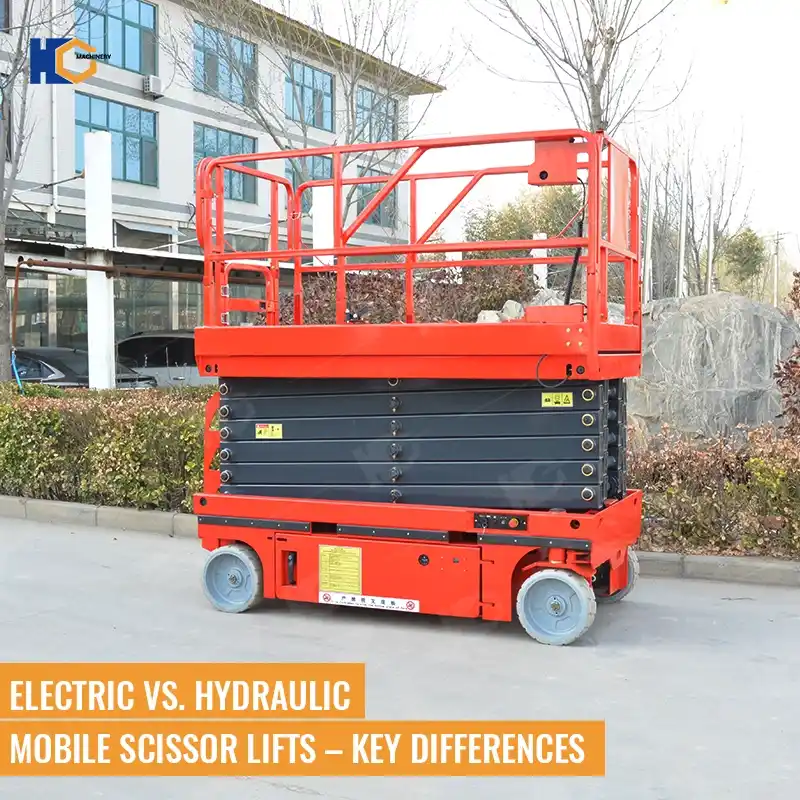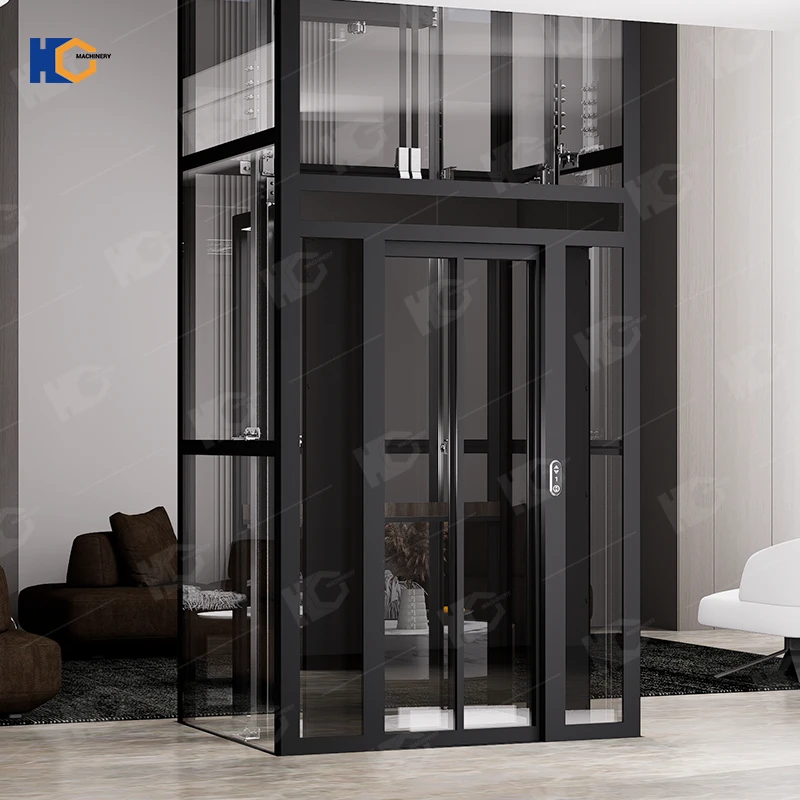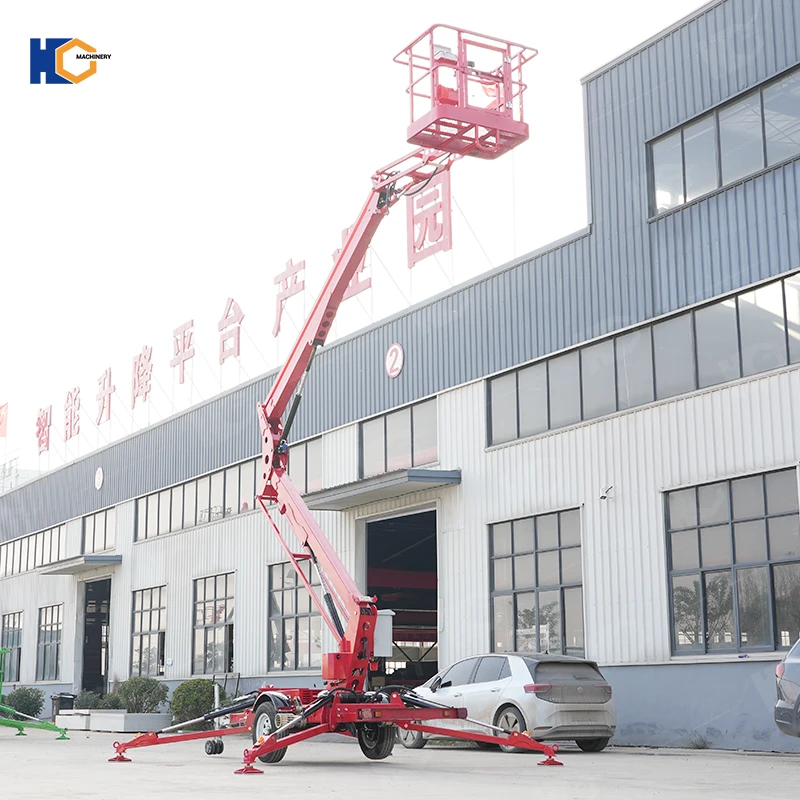Mobile scissor lifts are essential pieces of equipment used across a wide range of industries, including construction, warehousing, facility maintenance, and logistics. Known for their distinctive crisscrossing support structure, these lifts provide a stable and elevated work platform for safely reaching high areas. Whether it’s installing overhead lighting, managing warehouse inventory, or performing exterior building repairs, mobile scissor lifts offer versatility and efficiency for tasks that require vertical access.
As with any industrial equipment, choosing the right type of scissor lift can significantly impact productivity, safety, and operational costs. The two most common types are electric mobile scissor lifts and hydraulic mobile scissor lifts. While both serve the same fundamental purpose—lifting personnel or equipment to elevated heights—their internal mechanisms, power sources, and ideal use cases differ in important ways. Understanding these differences is critical for businesses and operators looking to optimize performance while minimizing downtime and long-term maintenance costs.
This article aims to explore the key differences between electric vs. hydraulic mobile scissor lifts, comparing their advantages, limitations, and typical applications. Whether you're selecting equipment for indoor facility work or rugged outdoor construction sites, knowing which type of lift best suits your needs can make all the difference. We’ll break down how each system operates, examine their maintenance requirements, and consider environmental and operational factors such as noise, emissions, and terrain adaptability. By the end, you’ll have a clear understanding of which lift type aligns best with your specific project demands.
What is a Scissor Lift?
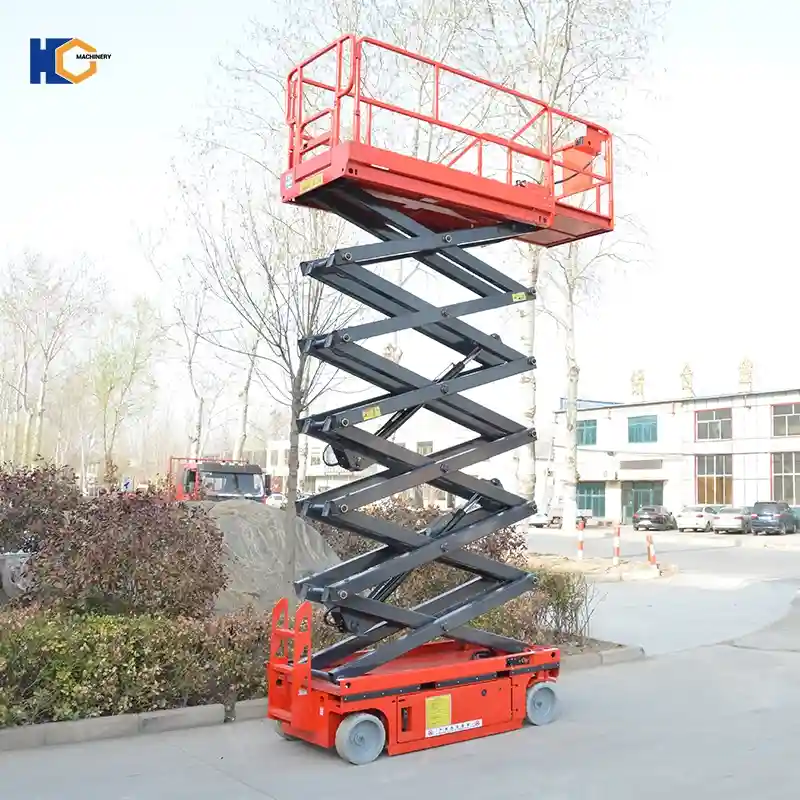
A scissor lift is a type of mobile elevated work platform (MEWP) designed to lift personnel, tools, and materials vertically to perform tasks at height. Named for its crisscrossing metal support structure that expands and contracts in a scissor-like motion, this lift offers a stable and secure platform that can be raised straight up without shifting laterally. Scissor lifts are commonly used when vertical elevation is needed in a confined or flat work area.
Key Components and Mechanics
The core components of a scissor lift include:
Platform: The uppermost surface where workers or materials are placed. It often includes guardrails for safety.
Scissor Arms: A series of folding supports arranged in a crisscross pattern that elongate when extended, lifting the platform vertically.
Base Frame: Provides structural support and houses the drive and lifting mechanisms.
Power Source: Depending on the type, this can be electric (battery-powered) or hydraulic (fluid and pump system).
Control System: Allows the operator to raise, lower, and maneuver the lift from the platform or the base.
When activated, either through an electric motor or hydraulic pressure, the scissor arms are pushed outward, causing the structure to elongate and lift the platform. When pressure is released, the arms retract and bring the platform back down.
Common Industries and Use Cases
Scissor lifts are used in a wide variety of industries due to their efficiency, safety, and ease of use. Common applications include:
Construction: For installing ductwork, wiring, lighting, and ceiling panels at height.
Warehousing and Logistics: For inventory management, stacking, and reaching high storage racks.
Building Maintenance: Ideal for tasks like window cleaning, painting, and facility inspections.
Manufacturing: Used on assembly lines and in maintenance operations.
Retail and Commercial Spaces: For setting up signage, displays, and performing indoor maintenance.
Their compact size, vertical lift capability, and ability to operate in tight indoor spaces make them particularly valuable in environments where ladders or scaffolding would be inefficient or unsafe. Whether powered by electricity or hydraulic systems, scissor lifts provide a practical solution for safe and stable elevated work.
Overview of Electric Scissor Lifts
Electric scissor lifts are a popular type of mobile elevated work platform (MEWP) that operate using electric motors powered by rechargeable batteries. Designed primarily for indoor use and flat, smooth surfaces, these lifts offer a quiet, clean, and efficient solution for working at height without the noise or emissions associated with fuel-powered alternatives.
How They Work
An electric scissor lift uses a system of electric motors and batteries to raise and lower the platform. The core lifting mechanism remains the same as with all scissor lifts—folding, crisscrossed supports (scissor arms) that extend to lift the platform vertically. In electric models, an onboard electric motor drives either a screw-type actuator or hydraulic pump (in electro-hydraulic variants) that powers the lifting motion.
Most electric scissor lifts are equipped with deep-cycle batteries, which store energy and can be recharged using standard electrical outlets. Operators control the lift using a panel on the platform, allowing for smooth vertical movement and limited horizontal driving (usually using electric wheel motors).
Advantages of Electric Scissor Lifts
Electric scissor lifts offer several distinct benefits, making them ideal for indoor work and environments where noise and emissions are concerns.
1. Quiet Operation
One of the most appreciated advantages of electric scissor lifts is their low noise output. Unlike fuel-powered machines, which produce significant engine noise, electric lifts operate almost silently. This makes them well-suited for indoor use in environments like office buildings, schools, hospitals, shopping malls, and warehouses where noise must be minimized.
2. Zero Emissions
Electric scissor lifts produce no exhaust emissions, making them safe for use in enclosed or poorly ventilated indoor areas. This eco-friendly operation is especially important in modern workplaces where environmental compliance and worker safety are priorities.
3. Lower Maintenance Requirements
Electric lifts typically have fewer moving parts and no combustion engine, resulting in lower maintenance costs and less frequent servicing. Without oil changes, fuel filters, or exhaust systems to manage, operators can focus more on productivity and less on downtime. Battery care and occasional motor checks are usually all that’s required.
4. Compact and Lightweight Design
Most electric scissor lifts are lightweight and compact, allowing them to maneuver easily in tight indoor spaces and fit through standard doorways and elevators. This makes them highly versatile for facility maintenance and indoor installations.
Disadvantages of Electric Scissor Lifts
While electric scissor lifts offer many advantages, there are some limitations that may affect their suitability for certain tasks or environments.
1. Limited Outdoor Use
Electric scissor lifts are generally designed for smooth, level indoor surfaces. Their smaller wheels and lower ground clearance make them unsuitable for rough or uneven terrain. Outdoor use is often restricted to paved areas, and exposure to wet conditions can damage the electrical components.
2. Shorter Duty Cycle
Electric scissor lifts rely on batteries that must be recharged regularly. Depending on the model and usage intensity, battery life can range from a few hours to a full workday. However, extended or continuous use may lead to downtime while the batteries are recharged or swapped out. For jobs requiring long or uninterrupted operation, this can be a disadvantage compared to fuel-powered alternatives.
Electric scissor lifts are an excellent choice for indoor, clean, and noise-sensitive work environments. They offer significant benefits in terms of efficiency, maintenance, and sustainability. However, their limited outdoor capability and reliance on battery life mean they are best suited for specific use cases. When used appropriately, electric lifts can greatly enhance productivity and safety on the job site.
Overview of Hydraulic Scissor Lifts
Hydraulic scissor lifts are a widely used type of mobile elevated work platform (MEWP) designed for vertical lifting in both indoor and outdoor environments. Known for their robust lifting power and ability to handle challenging conditions, these lifts use hydraulic systems to raise and lower heavy loads efficiently. Whether on construction sites, in industrial facilities, or in outdoor maintenance operations, hydraulic lifts are valued for their strength and reliability.
How They Work
Hydraulic scissor lifts operate using a system of hydraulic fluid, cylinders, and pumps to control the vertical movement of the platform. The basic structure features crisscrossed metal supports (scissor arms), just like other scissor lifts, but the mechanism that powers the extension of these arms is hydraulic-based.
When the operator engages the control panel, a hydraulic pump (usually powered by a diesel, gasoline, or electric motor) forces pressurized hydraulic fluid into the lift’s cylinders. As the fluid enters, it extends the pistons inside the cylinders, pushing the scissor arms apart and raising the platform. To lower the lift, the system releases fluid back into the reservoir, allowing the platform to descend in a controlled manner.
This hydraulic system enables smooth and powerful lifting, especially for heavy loads or high elevations.
Advantages of Hydraulic Scissor Lifts
Hydraulic scissor lifts are preferred in many rugged and heavy-duty applications due to their superior lifting force and structural durability. Here are their key benefits:
1. Powerful Lifting Capabilities
One of the main strengths of hydraulic scissor lifts is their ability to lift heavy loads with ease. The hydraulic system provides strong and consistent power, making these lifts ideal for industrial settings, construction projects, and applications where large equipment or materials must be elevated.
2. Better Suited for Rugged Environments
Hydraulic lifts are designed for demanding conditions. Their rugged construction, higher ground clearance, and ability to operate on uneven surfaces make them a better choice for outdoor or rough-terrain use. They can withstand wind, dirt, moisture, and debris far better than electric alternatives.
3. Durable for Heavy-Duty Work
Hydraulic lifts are built to last. Their durable frames and components are designed to endure frequent use under high-stress conditions. This makes them a solid investment for companies that require consistent, high-capacity lifting over long periods.
Disadvantages of Hydraulic Scissor Lifts
Despite their strengths, hydraulic scissor lifts come with certain drawbacks that may limit their use in specific environments or increase operational costs.
1. Noisy Operation
Hydraulic systems, especially those powered by combustion engines, tend to be much louder than electric models. This noise can be disruptive in indoor or noise-sensitive environments like schools, hospitals, or office buildings.
2. Potential for Fluid Leaks
Since hydraulic lifts rely on fluid under pressure, there is always a risk of leaks from hoses, seals, or valves. Not only can this cause operational issues and downtime, but leaked hydraulic fluid can also pose environmental and safety hazards if not properly managed.
3. More Maintenance Required
Hydraulic systems generally require more frequent maintenance than electric systems. Components like pumps, hoses, filters, and seals must be inspected and serviced regularly to prevent leaks and ensure smooth operation. In addition, maintaining the correct fluid levels and quality is essential for reliable performance.
Hydraulic scissor lifts are powerful, reliable machines designed for heavy lifting and rugged conditions. They excel in outdoor environments and industrial job sites where strength and durability are top priorities. However, their higher noise levels, risk of fluid leaks, and increased maintenance needs mean they may not be suitable for all applications—particularly indoor or clean environments. Choosing a hydraulic lift should be based on the specific demands of your worksite and the nature of the tasks involved.
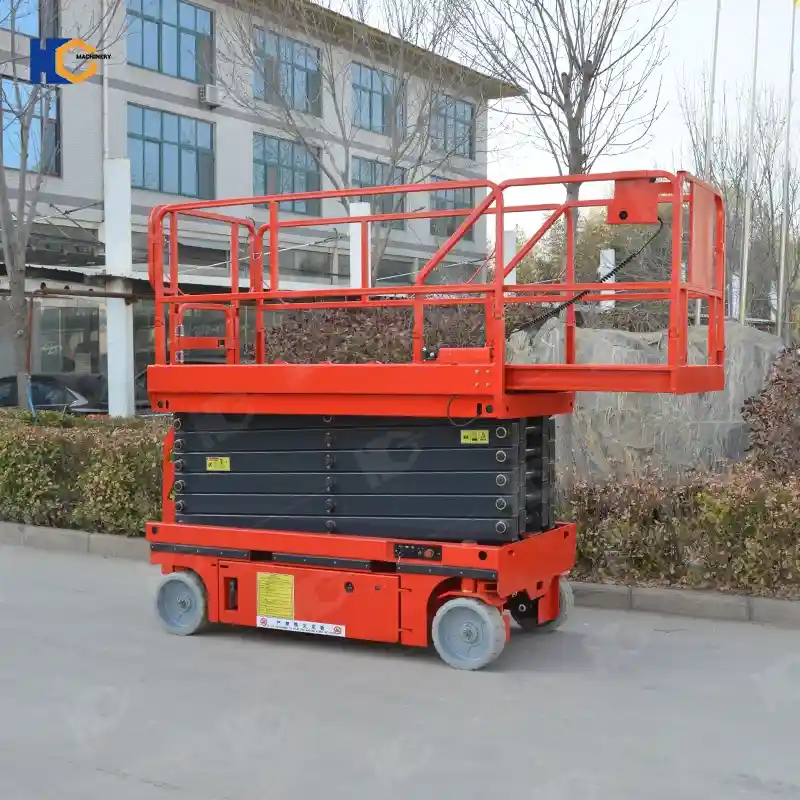
Key Differences at a Glance
Choosing between electric and hydraulic mobile scissor lifts involves understanding several important factors that affect performance, cost, and suitability for different environments. While both types provide vertical access and support for elevated work, their underlying systems and capabilities vary in key ways. Below is a breakdown of the five most critical differences between electric and hydraulic scissor lifts.
1. Power Source
Electric scissor lifts are powered by rechargeable batteries and use electric motors to operate the lift mechanism. Some may include electro-hydraulic components powered by electricity.
Hydraulic scissor lifts use a hydraulic pump system powered by either an internal combustion engine (diesel, gasoline) or electric motors to pressurize fluid and raise the platform.
2. Operating Environment (Indoor vs. Outdoor)
Electric lifts are ideal for indoor use, especially in clean, flat, and enclosed areas where noise and exhaust must be minimized.
Hydraulic lifts are better suited for outdoor environments and rugged terrains due to their stronger frames, higher ground clearance, and more powerful lift mechanisms.
3. Load Capacity
Hydraulic lifts generally offer higher load capacities, making them suitable for heavy-duty applications and lifting large materials or multiple workers.
Electric lifts typically support lighter loads, designed for maintenance tasks, facility work, and light construction.
4. Maintenance Requirements
Electric lifts require less frequent maintenance, with fewer moving parts and no combustion engine. Battery care is the main concern.
Hydraulic lifts require more regular upkeep, including checking fluid levels, inspecting hoses and seals, and managing potential leaks.
5. Environmental Impact
Electric lifts produce zero emissions and operate quietly, making them eco-friendly and safe for indoor air quality.
Hydraulic lifts, especially fuel-powered ones, generate noise and emissions, which can be problematic in enclosed or environmentally sensitive areas.
Comparison Table: Electric vs. Hydraulic Scissor Lifts
| Feature | Electric Scissor Lift | Hydraulic Scissor Lift |
|---|---|---|
| Power Source | Battery-powered electric motor | Hydraulic pump (fuel or electric motor) |
| Best Use Environment | Indoor, flat surfaces | Outdoor, rough terrain |
| Load Capacity | Moderate (typically 500–1,200 lbs) | High (up to 2,000 lbs or more) |
| Noise Level | Low (quiet operation) | High (engine and pump noise) |
| Emissions | None | Present (unless fully electric hydraulic) |
| Maintenance Needs | Low (battery care, occasional checks) | High (fluid checks, hose and seal inspections) |
| Durability in Harsh Conditions | Moderate | High |
| Ideal Applications | Facility maintenance, warehouses, retail | Construction sites, outdoor industrial work |
Understanding these key differences at a glance helps in selecting the right type of scissor lift for your needs. Electric scissor lifts excel in quiet, clean indoor environments, while hydraulic scissor lifts dominate in heavy-duty, outdoor, or rugged conditions. Your decision should balance load requirements, terrain, maintenance capabilities, and environmental factors.
Choosing the Right Lift for Your Needs
Selecting between an electric or hydraulic mobile scissor lift isn't just about preferences—it's about aligning the equipment with your actual job site demands. Choosing the right lift for your needs requires evaluating several key factors that directly impact performance, efficiency, safety, and cost-effectiveness. Below are four essential considerations to guide your decision-making process.
1. Worksite Conditions
The first and most critical factor is your operating environment. Electric scissor lifts are best suited for indoor, level-surface environments such as warehouses, commercial buildings, shopping malls, and clean manufacturing spaces. They are compact, produce no emissions, and operate quietly—qualities that make them ideal for indoor use where space and environmental regulations are critical.
Hydraulic scissor lifts, on the other hand, are built for outdoor and rough-terrain environments. If your job site includes uneven surfaces, gravel, mud, or variable weather, a hydraulic lift offers the durability and ground clearance needed to operate safely and effectively in those conditions.
2. Lifting Height and Weight Requirements
Next, consider the maximum height and load capacity required for your tasks. While both types of lifts come in a variety of models and sizes, hydraulic scissor lifts typically offer greater lifting power and are designed to handle heavier loads.
If you're lifting tools, equipment, or multiple workers at once—especially at heights over 30 feet—a hydraulic lift may be more appropriate. Electric scissor lifts generally support lighter loads and moderate heights, making them perfect for routine maintenance, inventory tasks, or indoor installations that don’t demand extreme lifting power.
3. Frequency of Use
The intensity and frequency of lift use also plays a major role. For light to moderate daily use, such as periodic maintenance or scheduled facility work, electric lifts are typically sufficient and more cost-effective. Their lower maintenance demands and cleaner operation make them suitable for environments that require reliability with minimal upkeep.
However, if the lift will be used heavily throughout the day, especially on construction sites or for industrial operations, a hydraulic lift is more durable and better suited for continuous and rugged use. Keep in mind that hydraulic systems can handle more wear and tear but may require more regular servicing.
4. Budget and Long-Term Costs
While electric lifts may have a higher initial purchase cost in some cases, they often provide long-term savings due to lower maintenance, reduced fuel costs, and minimal downtime. They are an excellent choice if operational efficiency, energy savings, and low ownership costs are priorities.
Hydraulic lifts might be less expensive upfront—especially in combustion-engine models—but they come with higher ongoing costs, including fuel, hydraulic fluid replacement, and mechanical maintenance. If your organization is prepared to manage those costs and needs a machine for demanding work, hydraulic may still be the better investment.
There’s no one-size-fits-all solution when it comes to mobile scissor lifts. By carefully considering worksite conditions, lifting requirements, usage frequency, and budget, you can confidently choose the lift that aligns with your operational goals. Whether it’s an electric scissor lift for clean indoor tasks or a hydraulic scissor lift for heavy outdoor work, making the right choice will boost safety, efficiency, and return on investment.
Conclusion
Choosing between electric and hydraulic mobile scissor lifts depends on your specific needs and job site conditions. Electric lifts are ideal for indoor, quiet, and low-maintenance environments, while hydraulic lifts excel in outdoor, rugged, and heavy-duty applications. Consider factors such as terrain, lifting capacity, usage frequency, and long-term costs before deciding. By aligning the lift type with your operational demands, you can ensure greater efficiency, safety, and value for your investment. Whether it’s a clean warehouse or a tough construction site, the right scissor lift will make all the difference.
JNHC LIFT is a professional manufacturer and supplier of both Electric and Hydraulic Mobile Scissor Lifts, offering high-quality, reliable lifting solutions for a wide range of industries and applications. Whether you need a quiet, eco-friendly option for indoor use or a rugged, heavy-duty lift for outdoor work, we have the right equipment to meet your needs. Our products are built for safety, durability, and performance. We also provide expert guidance to help you choose the most suitable model for your project. Contact us We are a professional manufacturer and supplier of both Electric and Hydraulic Mobile Scissor Lifts, offering high-quality, reliable lifting solutions for a wide range of industries and applications. Whether you need a quiet, eco-friendly option for indoor use or a rugged, heavy-duty lift for outdoor work, we have the right equipment to meet your needs. Our products are built for safety, durability, and performance. We also provide expert guidance to help you choose the most suitable model for your project. Contact usfor more information, pricing, or to request a customized solution for your lifting requirements!for more information, pricing, or to request a customized solution for your lifting requirements!
